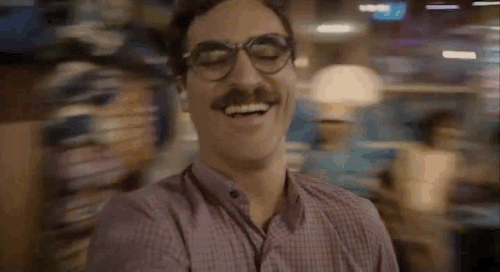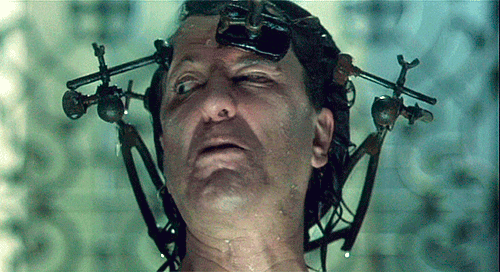Embrace of the serpent (2015)
This was a mixed bag of a movie; some good parts, some not eaqualy good. I think I'll need to structure this review in a kind of boring way, just to make sure I get everything I want to cover out on the post. I also have to mention that I haven't red very much of the other reviews in this thread, just to make sure that what I write is my impressions and not a hodge podge of what everyone else has written. As such, if I go over stuff that the others have allready mentiond, bare with me. Also, I had some difficulties finding a working site to watch this. Neither the american nor the brittish version of Amazon allowed me to rent it(geographicly locked licencing or somthing) and to get a physical copy I'd be forced to pay $30. So I found a poorly subed, semi-legal workaround instead (who knew that a stumbling knowledge of spanish could actually come in handy)

And now, what I thought.
I can deffinitely second Tongo's oppinion of how the movie looks. The cinematography is excellent and the visuals are fantastic. It's such a shame they chose to shoot in b&w, though. I would've loved to see the rainforest in all it's green glory. Also, for about a third of the movie I thought that the actor playing the young Shaman had been sunbathing with pants on before going to the set as his upper body was a few shades darker than his lower. In fact, he was wearing bodypaint,(

) probably brightly colored too, but that was lost due to the choise of film. Is it a dealbreaker? No, the movie looks beautiful just the way it is, but such details could help sell the movie's climax even more.
WARNING: "ending of Embrace" spoilers below
Throughout the movie, the younger shaman wants to reunite with his people and all throughout the journey he's been furious at the companion of the scientist, berating him for leaving the old way behind as he sees it. When the shaman finally returns to his village, he's enraged to learn that the people there also have adapted more modern ways, above all western clothing. So when he, dressed up in his finest feather headdress and wearing the bodypaint, walks in to the main hut and finds a group of men in western clothing, they laugh at him. If you could've seen his bright bodypaint in contrast to their rather mundane khakis, it would've sold the point of him not fitting in even more.
Throughout the movie, the younger shaman wants to reunite with his people and all throughout the journey he's been furious at the companion of the scientist, berating him for leaving the old way behind as he sees it. When the shaman finally returns to his village, he's enraged to learn that the people there also have adapted more modern ways, above all western clothing. So when he, dressed up in his finest feather headdress and wearing the bodypaint, walks in to the main hut and finds a group of men in western clothing, they laugh at him. If you could've seen his bright bodypaint in contrast to their rather mundane khakis, it would've sold the point of him not fitting in even more.
Next up is the actors. I've never encountered any of them before to my knowledge, but I feel that the most praise goes to the three people we spend the most time with, and of those the prize for stealing the show goes to Nilbio Torres as the young Karamakate. A headstrong, verbaly abusive know-it-all who's laughter rings with derision. And a build that would make Schwarzenegger blush. He's hostile from the word go, even refusing to help a dying man with less than being bribed with the knowledge that his tribe still lives and that the sick man would show the way if Karamakate helped him. That said, the hostility doesn't come from nowhere, as white people and colombians attacked his village and forced him to flee, thinking that his entire tribe was slaughtered.
The sick man previously mentioned is the second of the three, Jan Bijvoet, portraying Theo, a german scientist on the hunt for a plant with healing properties. By his side is Manduca, his traveling companion, played by Yauenkü Migue. Together they've hunted for said flower for a very long time, establishing connections with local tribes and pushed themselves so far as to actually bring Theo to the brink of death from some unknown illness. They both get an opportunity to flex their acting muscles, but mostly they play second (and third) fiddle to Torres. The plot's mostly moved forward through him, either directly or through conversation between him and Theo.
Also, I've been calling him the
young Karamakate for a reason. The character of Karamakate is portrayed by two actors, as this story runs parallel with another, set 40 years later as Karamakate again is confronted with the same rare flower. The old Karamakate is quieter, seems more weary and sufferes from a bad memory. He didn't make much of an impression on me, more than that of any stereotypical tribal elder; old, stoic and supposedly full of deep knowledge. Think old native american chieftain and you're pretty close. This part of the movie baerly cover a quarter of the running time, so heavy focus is put on the younger Karamakate, as well it should.
As to the story itself, I'm not going in to that here in any deapth, but all in all it's decent enough. The first 20-30 minutes draged a bit, and after that it was pretty much smooth sailing...err...canoing rather. They paddle a bit and talk, then they stop and somthing happens. Then they get into the canoe again and set off. Rinse and repeat. Infrequently the jump forward 40 years and spend some time with old Katamakate. Once you even get to see the same place twice, once with young Katamakate and then with the old one. It gets wierd.
So to sum up...good movie. Interesting plot, well acted and beautiful scenery. Not the most intense experience ever, but very competently put together. I liked it and could see myself rewatching it in a few years






 ) probably brightly colored too, but that was lost due to the choise of film. Is it a dealbreaker? No, the movie looks beautiful just the way it is, but such details could help sell the movie's climax even more.
) probably brightly colored too, but that was lost due to the choise of film. Is it a dealbreaker? No, the movie looks beautiful just the way it is, but such details could help sell the movie's climax even more.



